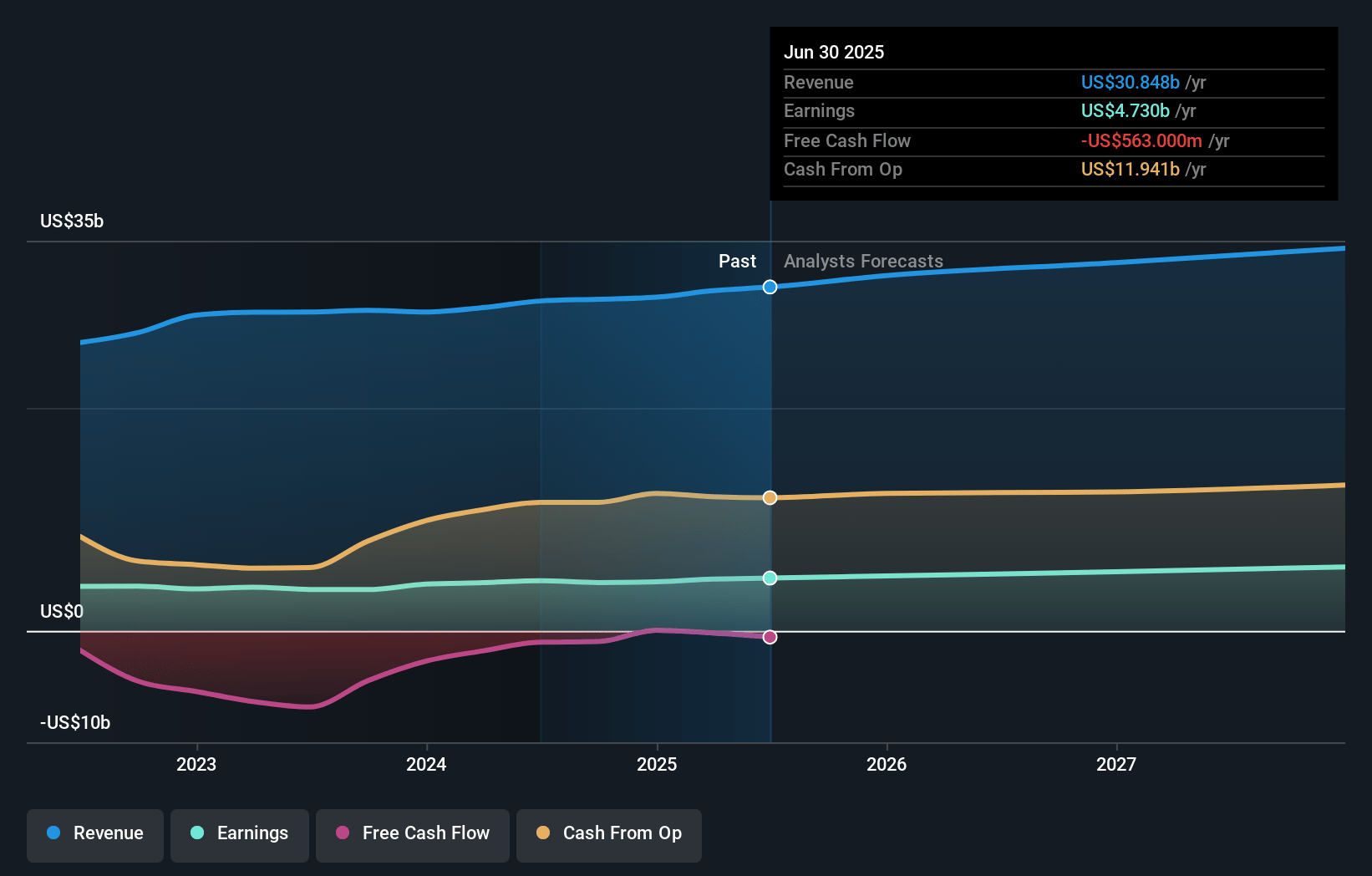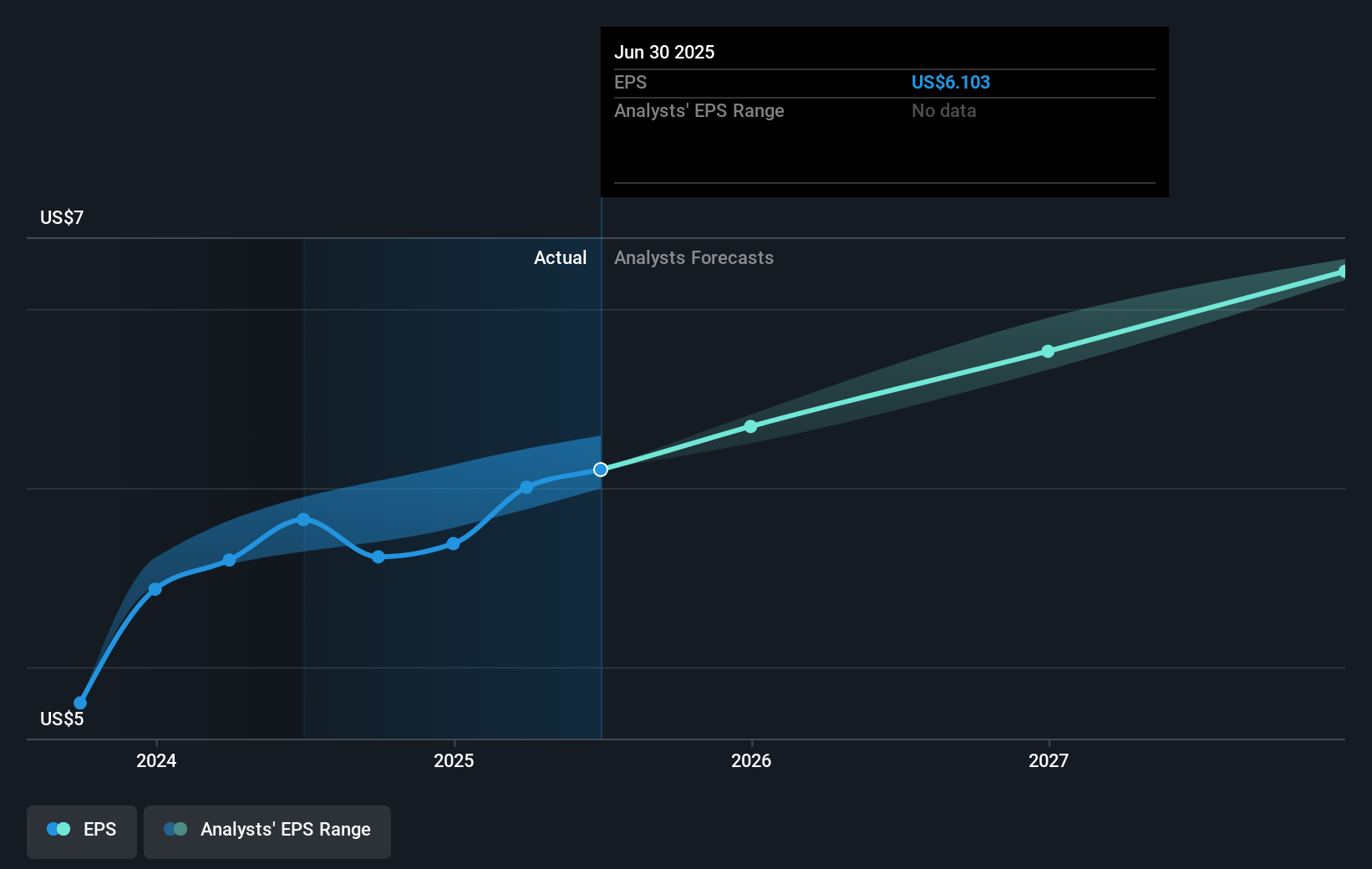Key Takeaways
- Strategic infrastructure investments and multiyear rate plans are poised to enhance earnings growth, revenue stability, and regulatory risk reduction.
- Emphasizing innovative tariffs and diverse energy resources aligns with regulatory support, boosting Duke Energy's financial and competitive standing.
- Duke Energy's capital-intensive strategy faces risks from regulatory setbacks, natural disasters, equity funding requirements, legislative uncertainty, and interest rate volatility.
Catalysts
About Duke Energy- Through its subsidiaries, operates as an energy company in the United States.
- The $83 billion capital plan aimed at infrastructure spending through 2029 is expected to drive 7.7% earnings base growth, primarily by enhancing service reliability and expanding capacity, which can bolster revenue and earnings growth.
- Implementation of new multiyear rate plans, such as those in Florida and North Carolina, is anticipated to sustain top-line growth by providing a predictable revenue stream and minimizing rate case exposure through 2025-2026.
- The approval of over $45 billion in rate base investments is likely to reduce regulatory risk and protect margins, as timely recovery of investments supports steady cash flows and stable earnings.
- Significant economic development projects in the Carolinas are expected to increase load growth by 3% to 4% from 2027, fueled by demand from advanced manufacturing and data centers, potentially enhancing revenue and earnings.
- The strategic focus on innovative tariff structures and a diverse mix of generation resources, including renewables and natural gas, aligns with regulatory support and customer needs, which could improve net margins and enhance Duke Energy’s competitive positioning.
Duke Energy Future Earnings and Revenue Growth
Assumptions
How have these above catalysts been quantified?- Analysts are assuming Duke Energy's revenue will grow by 4.4% annually over the next 3 years.
- Analysts assume that profit margins will increase from 14.7% today to 16.8% in 3 years time.
- Analysts expect earnings to reach $5.7 billion (and earnings per share of $7.19) by about April 2028, up from $4.4 billion today. The analysts are largely in agreement about this estimate.
- In order for the above numbers to justify the analysts price target, the company would need to trade at a PE ratio of 20.6x on those 2028 earnings, down from 21.5x today. This future PE is lower than the current PE for the US Electric Utilities industry at 21.0x.
- Analysts expect the number of shares outstanding to grow by 0.61% per year for the next 3 years.
- To value all of this in today's terms, we will use a discount rate of 6.21%, as per the Simply Wall St company report.
Duke Energy Future Earnings Per Share Growth
Risks
What could happen that would invalidate this narrative?- Duke Energy's reliance on substantial capital investments, such as the $83 billion capital plan, poses risks if they fail to deliver expected returns or face regulatory setbacks, potentially impacting future earnings and cash flows.
- The company's exposure to natural disasters, as indicated by the impacts of Hurricanes Helene and Milton in 2024, highlights a risk to operational continuity and could negatively affect net margins through increased expenses for repairs and recovery.
- Duke Energy's increased equity funding requirement of $6.5 billion over the next 5 years could lead to share dilution, potentially affecting earnings per share and shareholder returns in the short to medium term.
- Potential regulatory changes and legislative uncertainty, especially in states like South Carolina, may affect the company's ability to execute its planned investments and manage operational costs, impacting revenue stability.
- Interest rate volatility and higher interest expenses could pose a risk to Duke Energy's financial metrics and profitability, particularly with the increase in debt levels to support its capital-intensive growth strategy.
Valuation
How have all the factors above been brought together to estimate a fair value?- The analysts have a consensus price target of $124.206 for Duke Energy based on their expectations of its future earnings growth, profit margins and other risk factors.
- In order for you to agree with the analyst's consensus, you'd need to believe that by 2028, revenues will be $34.1 billion, earnings will come to $5.7 billion, and it would be trading on a PE ratio of 20.6x, assuming you use a discount rate of 6.2%.
- Given the current share price of $121.7, the analyst price target of $124.21 is 2.0% higher. The relatively low difference between the current share price and the analyst consensus price target indicates that they believe on average, the company is fairly priced.
- We always encourage you to reach your own conclusions though. So sense check these analyst numbers against your own assumptions and expectations based on your understanding of the business and what you believe is probable.
How well do narratives help inform your perspective?
Disclaimer
Warren A.I. is a tool utilizing a Large Language Model (LLM) that ingests data on consensus price targets, forecasted revenue and earnings figures, as well as the transcripts of earnings calls to produce qualitative analysis. The narratives produced by Warren A.I. are general in nature and are based solely on analyst data and publicly-available material published by the respective companies. These scenarios are not indicative of the company's future performance and are exploratory in nature. Simply Wall St has no position in the company(s) mentioned. Simply Wall St may provide the securities issuer or related entities with website advertising services for a fee, on an arm's length basis. These relationships have no impact on the way we conduct our business, the content we host, or how our content is served to users. The price targets and estimates used are consensus data, and do not constitute a recommendation to buy or sell any stock, and they do not take account of your objectives, or your financial situation. Note that Warren A.I.'s analysis may not factor in the latest price-sensitive company announcements or qualitative material.




